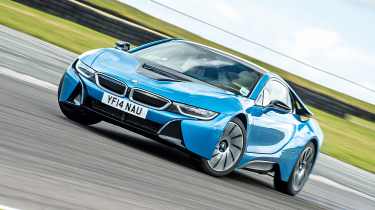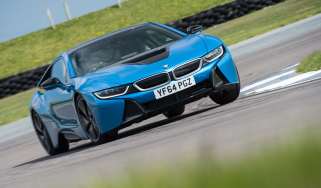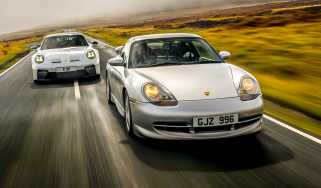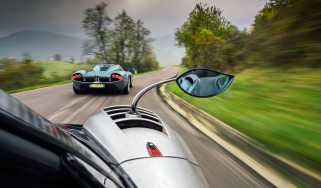BMW i8 – the car world's greatest misses
A bold concept with a visionary powertrain, but the i8 was too far ahead of the game for its own good

Is there a difference between a great automotive miss and a car that simply arrived ahead of its optimal time slot? Think Audi A2: a compact luxury city car with a badge as desirable as a high-end fashion accessory and innovation at its core, such as its lightweight aluminium structure. It’s the car we need today far more than we do an RS Q8. Enough of us didn’t buy them at the beginning of the new millennium, but launched today with a well packaged and efficient hybrid powertrain, every suburban area and city centre would be crawling with them. Probably.
Then again, a decade after the A2, BMW had equally poor results with its even more suitable urban mobility solution, the i3. It had a carbon structure, Tardis‑esque proportions and an approach to interior design the likes of Polestar pretend to achieve today but in reality are light years away from matching. We didn’t buy i3s either; instead you’ll find an X6 parked half on the road with its other two 22-inch wheels (kerbed, naturally) on the pavement.
We also didn’t buy – well only 20,000 people did – BMW’s other carbon-structured hybrid car from the same era: the i8. But was this 2+2 sports car simply another vehicle that was ahead of its time rather than an automotive miss? I think so.
Back in 2014 the concept of a hybrid-powered sports car was all-new. BMW was the first if we ignore the perennial bankruptcy experts Fisker, and it thought its rivals would follow. They didn’t. Which made group tests hard when on the other side of the car park you would find a twin-turbocharged six-cylinder Porsche 911 Turbo and Nissan GT-R, a turbocharged V8-powered AMG GT and Aston Martin’s brilliant N430 Vantage complete with growling naturally aspirated V8. A three-cylinder 1.5-litre motor taken from a Mini and a sub-40-mile battery range wasn’t going to cut it.
The biggest issue the i8 faced was that it didn’t feel like a supercar to drive, specifically when it came to the performance part. Its combined ICE and battery 369bhp peak and 1544kg kerb weight (on our scales) gave it Cayman-like performance rather than 911, and combined with skinny yet efficient wheels and tyres (215s on the front, 245s for the rear) and overly light steering it was a car that preferred to flow than be a torrent of feedback and excitement. It did ride beautifully though.
It also looked like a supercar. A striking shape that stood out among the bland designs that occupied our roads then as they do now. Dihedral doors, a low slung, wide sill and an even lower slung driving position created an unbeatable supercar feeling. But this was also its biggest challenge – not having the go to match its show – and for so many that was a barrier too far.
i8 production ended in 2020, with a rumoured i16 in the wings ready to go, but the pandemic saw to its demise. Instead we got the M8 Competition coupe, with a 616bhp twin-turbocharged V8 to haul its 1885kg around. More recently AMG and Porsche have both released hybrid-powered GTs and 911s respectively, while Aston Martin’s first hybrid is not far away either. BMW’s i8 may have been a sales miss, but only because it was the right car at the wrong time.





